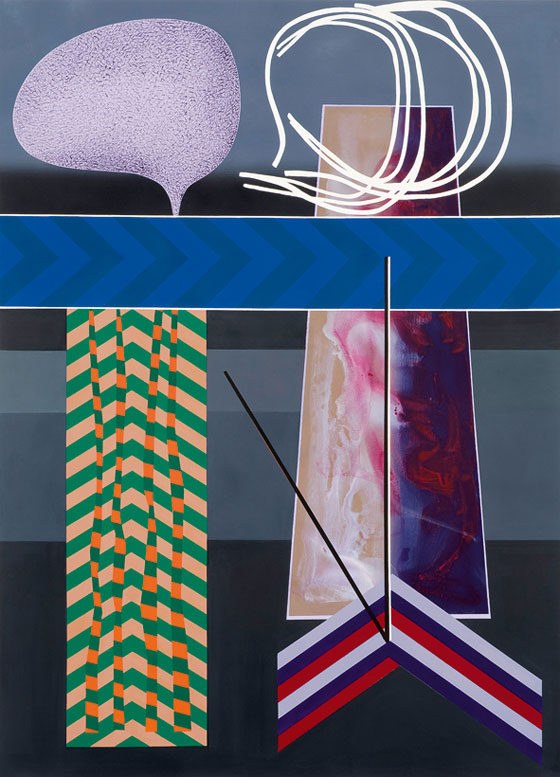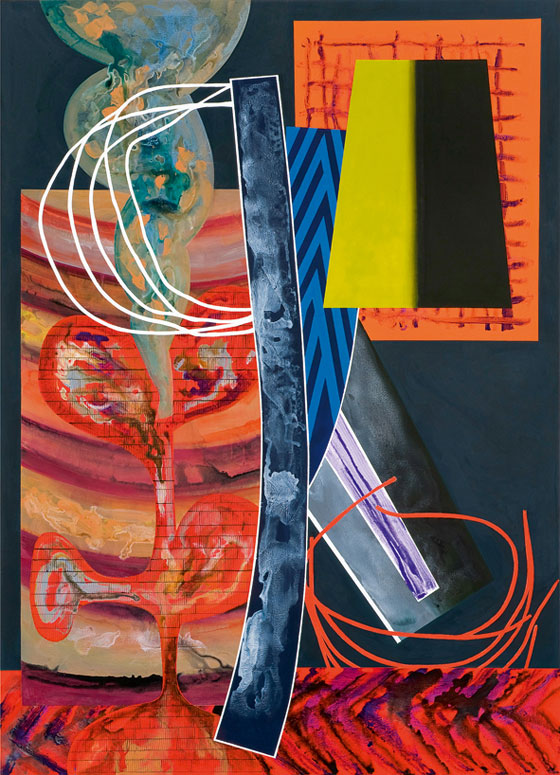|
|
| Harmonised cacophony Sniedze Sofija Kāle, Art Historian Heinz Hermann Jurczek. Improvisation on the Theme of Fall of Images 04.09.– 01.10.2010. Alma Gallery | |
| The solo exhibition Improvisation on the Theme of Fall of Images by Heinz Hermann Jurczek, a German artist living in Lithuania since 2005, was on show at the Alma Gallery until October 1. Thanks to the efforts of Lithuanian art historian and curator Raminta Jurenaite, Jurczek’s paintings had been shown in Riga on an earlier occasion at the exhibition The Vilnius Art Scene since 2000, held in 2009 at the Latvian National Art Museum Arsenāls exhibition hall. This time around, Riga residents had the opportunity to take a closer look at the painter’s unusual visual language. In describing his work, harbinger of abstract art Wassily Kandinsky drew parallels between music and visual art: “Colour is the keys, the eyes are harmony, and the soul is a piano with many strings. The artist is a hand that plays one or another key to produce vibrations in the soul.” In relation to the Jurczek exhibition, I want to continue this linkage between abstraction and music by bringing in the concept of cacophony, because the paintings combine very divergent visual languages. | |
 Heinz Hermann Jurczek. Boom II. Acrylic on canvas. 180x130 cm. 2009. Publicity photo | |
| In the history of painting, abstractionism continued the development of “pure” art and made viewers and critics bow their heads even more reverently before the paintergenius, meditating for hours before a canvas of two colours to divine the insights into the world and emotionality therein. While Jurczek seemingly continues to use abstract form, he only does it to the extent that it could be deemed subjectless. The abstract is used in Jurczek’s canvases similarly to the way that the quote or paraphrase of the concept of “improvisation” formulated by Kandinsky is included in the exhibition title, a notion which he explained at the time as the composition of an artwork through inspiration and random impulses. Heinz Hermann Jurczek utilises in his paintings a body of visual elements and references which form a mutual overlapping. The sterile striped belts and fields executed with the aid of a stencil, often in contrasting colours (Breakthrough, Power Transmission II), are reminiscent of conceptualist ‘non-art’. The industrially manufactured zigzags on street surfaces and roadside posts created to “put to sleep” or, conversely, sharpen awareness, are characteristic of so-called cool art, which followed abstractionism. In a number of canvases (Boom II, Pluralistic Piece), quotes from comic book-like thought or speech “bubbles” or onomatopoeic words depicting collisions induce a frivolous mood. Against the background of the overall visual elements used in the paintings – monochrome fields or bold watercolour-like floodings or carefully bordered colour rhythms – this technique for shading drawings stands out with its deliberate awkwardness. Jurczek uses an attractive approach to unite the objectless elements – opposing colours, diagonals, line segments and dynamic interplay between fields – which quite often achieves the effect of a collision. The carefully hand-dotted lines or uneven checks create dissonance with the dispassionate perfection of the stencils, just as the idea of pursuing “pure” art nurtured by abstractionism conflicts with quotes from visual language, creating noise in the painting’s overall sound, which has been harmonised by a good sense of composition. | |
 Heinz Hermann Jurczek. Morphology II. Acrylic on canvas. 180x130 cm. 2009. Publicity photo | |
| In contrast to Kandinsky, who titled his pictures with dry numeration, the German painter is more concrete and gives his works names that encapsulate movement or impulses in relation to their content, for example Power Transmission II, or irony as in Comic Piece II. Using words conjures up a dose of humanity in the abstractions of his paintings and a link with observable processes in our world (Break-through, Greenhouse, Indoor Games I, Upswing, Fine Tuning), making the viewer recognise situations and emotions from real life within the colour segments, interacting fields and spatial fractures. However, these fleeting feelings are dispersed by the exhibition’s ironic title speaking of the death of images, a situation that cannot be ignored in the 21st century as the most diligent critics periodically announce and remind us that art or the artist is dead, while practice follows at the rear and resuscitates the fallen. The employment of contradictory forms of visual expressions in Jurczek’s paintings serves as a clear-cut “alibi” in case someone should decide to accuse him of cultivating decorativism in contemporary art. In contrast to many female painters who yield to simple ornamental beauty, Jurczek takes elements typical of urban settings and combines them in spatial, attractive constructions, with a touch of “hard issues” and with a healthy dose of irony. /Translated into English: Filips Birzulis/ | |
| go back | |







